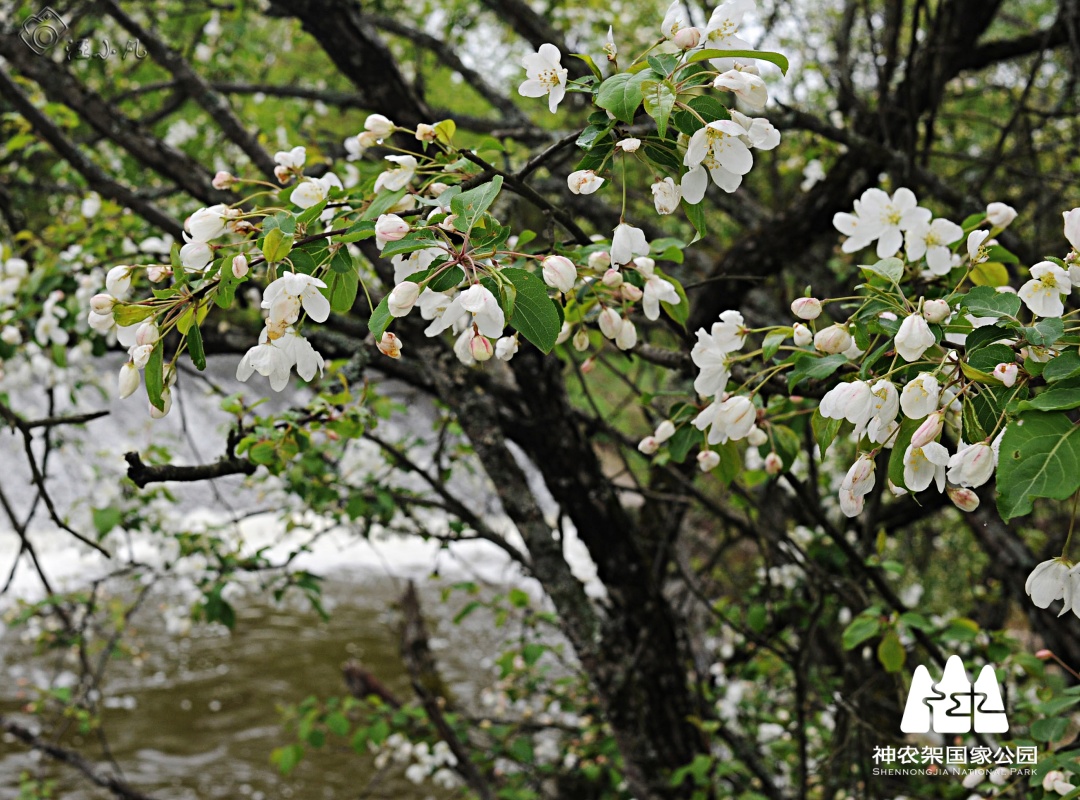Hubei Crabapple: A Tea of the People Witnessing the Historical Changes of Shennongjia
Updated:2025-11-13 Source:Shennongjia National Park
Crabapple (Hai Tang) is the common name and folk name for various plants in the Malus genus of the Rosaceae family. As a famous ornamental tree species in China, it is widely cultivated across the country. With its graceful posture and blossoms like brocade, the crabapple has been a celebrated flower appreciated by both the refined and the popular since ancient times, renowned as the “Fairy among Flowers”, “Imperial Concubine of Flowers”, and “Noble Flower.” The crabapple enjoys the reputation of being the “National Beauty”. Historically, it was often planted alongside magnolias, peonies, and osmanthus in imperial gardens, symbolizing “Flowering Riches and Honor, Gold and Jade Filling the Hall”. Scholars throughout the ages have penned many well-known verses praising the crabapple. Lu You wrote in a poem: “Though gorgeous, it lacks vulgar charm; truly imperial splendor and wealth”, describing the crabapple’s beauty and elegance. It was also the favorite flower of Premier Zhou Enlai during his lifetime, specifically the crabapple tree in the West Flower Hall of Zhongnanhai.


Among crabapples, only the “Xifu Crabapple (Malus micromalus)”, native to Baoji, Shaanxi, is fragrant; other species lack floral scent. The modern writer Eileen Chang once said there are “three regrets in life”: “the crabapple has no fragrance, the Reeves shad has many bones, and Dream of the Red Chamber is unfinished”. The crabapple introduced here is the scentless Hubei Crabapple (Malus hupehensis). In mountainous areas, it is also known as “Ye Hua Hong (Wild Flower Red)” or “Cha Hai Tang (Tea Crabapple)”. Its type locality is in northwestern Hubei within the Daba Mountains, distributed from altitudes of 50 meters in plains to 2,900 meters in subalpine regions. The Hubei Crabapple exhibits remarkable vitality: it is flood-tolerant, drought-resistant, and cold-hardy. The plant can survive with its root system completely submerged in water for a week and endure low temperatures down to -21°C. In Shennongjia, with an average altitude of 1,700 meters, it frequently faces the test of ice and snow and withstands scorching summer droughts. It truly serves as a microcosm of tenacious life within the vast mountains of Shennongjia.
The Hubei Crabapple has snow-white flowers. Its main flowering period varies with altitude, generally occurring between April and June. In Shennongjia, it blooms most profusely from mid-May to early June, making it ideal for viewing. The leaves of the Hubei Crabapple are often processed into tea. This unique tea is also known in the mountains as “Hua Hong Cha (Flower Red Tea)”, “Lin Qin Cha (Crabapple Tea)”, or “San Pi Guan (Three-Leaf Crabapple Tea)”. Legend has it that Emperor Yan (Shennong), tasting hundreds of herbs to cure human ailments and frequently suffering poisoning, consumed crabapple tea as an antidote. In reality, during the early days of era of scarce daily necessities in western Hubei, the leaves of the crabapple tree were commonly collected, dried, and brewed into tea to quench thirst and relieve summer heat, which was well-known to all. Today, with the improvement of material living standards and the passing of the older generations, crabapple tea—the once-popular beverage deeply rooted in the daily lives of hardworking people—is gradually being forgotten. Its fruit is a pome, oval or nearly spherical, about 1 cm in diameter, yellowish-green with a slight reddish blush. The fruit is harvested fresh from August to September. It tastes sour and has a neutral nature. It can be used medicinally in place of hawthorn (Crataegus) to promote digestion and eliminate stagnation, and treat dysentery and infantile malnutrition (疳积). Therefore, its fruit is a valuable medicinal material for strengthening the stomach and aiding digestion and can also be used to make wine. The seeds of the Hubei Crabapple contain 30% oil, which is odorless, edible, and suitable for soap making.
The Hubei Crabapple is widely distributed in the Shennongjia area. However, according to current survey records, apart from large ancient crabapple communities over a hundred years old found in the Dajiuhu Wetland and Qianjiaping areas at altitudes of 1,700-2,200 meters, in other places, it is mostly sporadically distributed in other places. During the early period when Shennongjia was a state-owned forest farm undergoing large-scale logging, the crabapple trees were spared due to their graceful form and the sharp tips of their small branches, which made felling and hauling inconvenient. Consequently, they have survived to this day in the form of ancient tree communities. This also indirectly attests to the abundance of forest resources in Shennongjia. (Written by Zhang Zhiqi Reviewed by Jiang Mingxi Photo by Li Xiaodong)
Address:36 Chulin Road, Muyu Town, Shennongjia Forestry District, Hubei Province 鄂ICP备18005077号-3
Phone:0719-3453368



